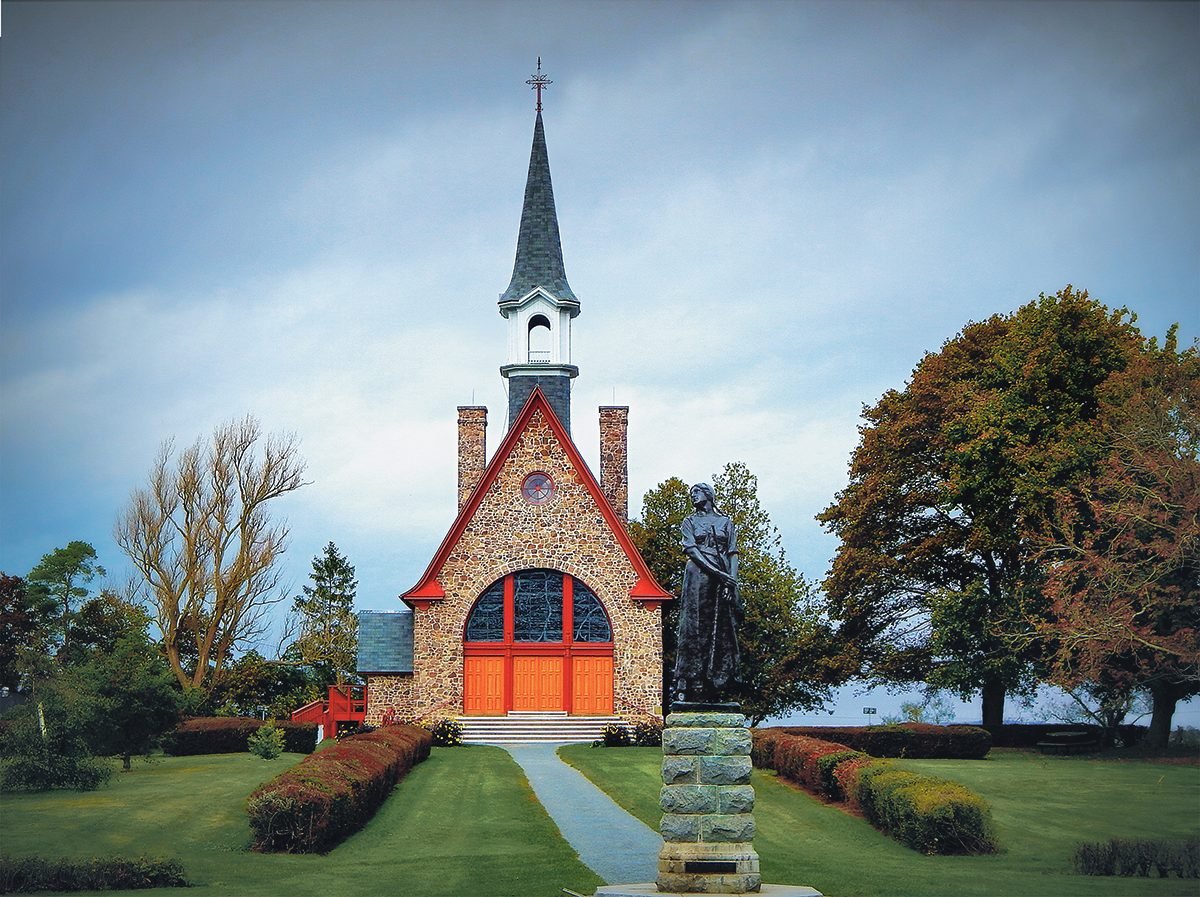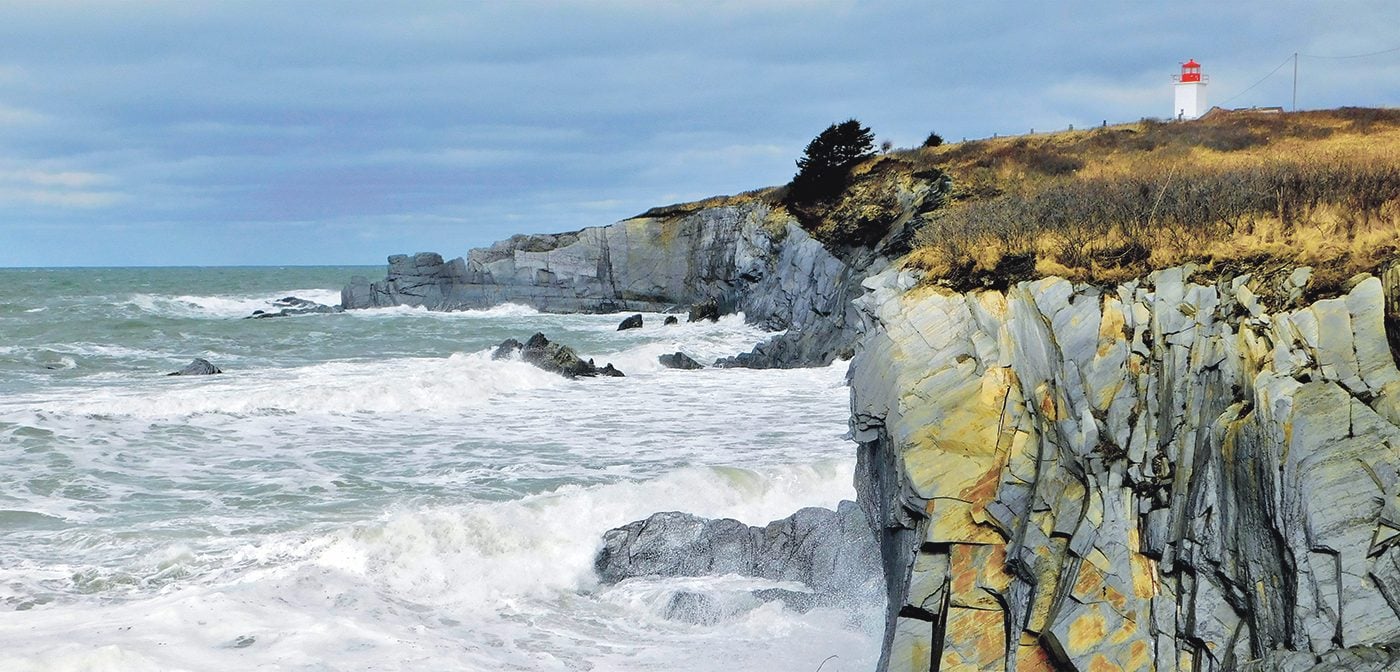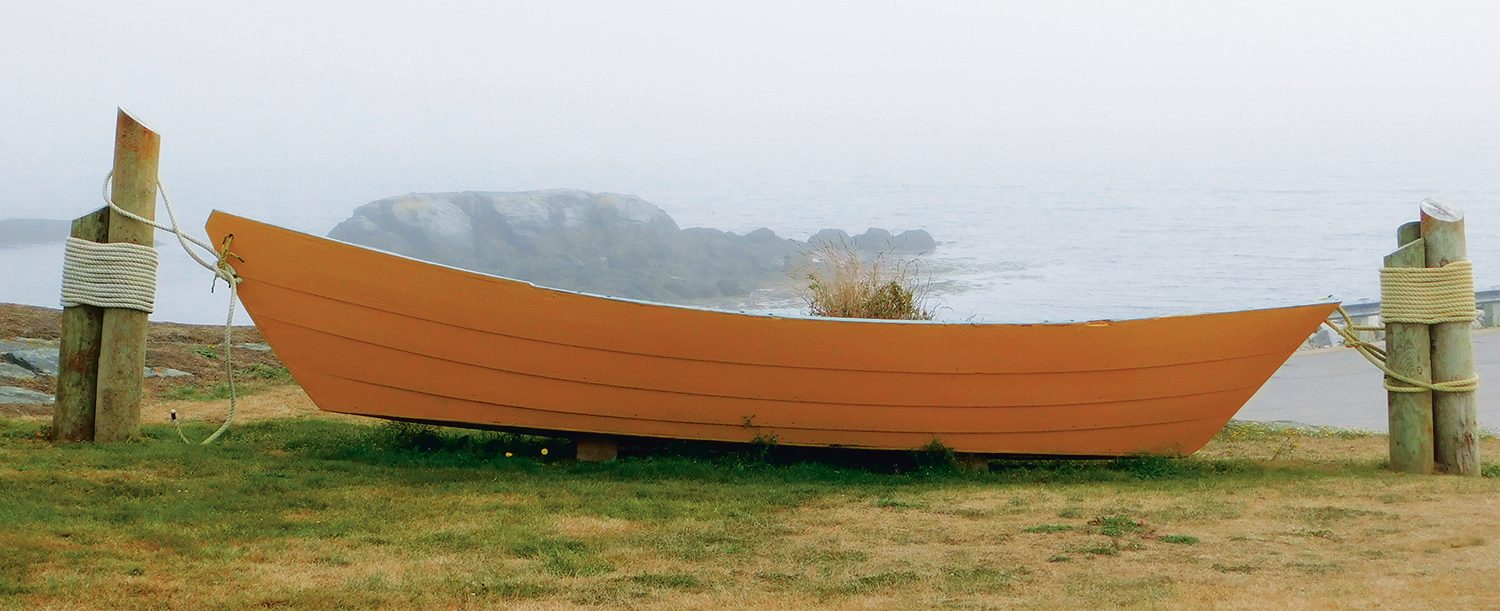
Following the Evangeline Trail
The history and beauty of Nova Scotia are one and the same to me. The stories, lore and legacy of the Acadian people blend into one scenic roadway, the Evangeline Trail. It meanders through the patchwork of orchards and farms of the Annapolis Valley, and along the shoreline of St. Mary’s Bay to its terminus in Yarmouth, once one of the busiest seaports in the world. This is my home, my ancestry and the places I love to capture the most through the lens of my camera—no matter the season—are located here.
The Acadians, a peace-loving people from France, arrived in what is now Nova Scotia in the early 1600s. They settled in Port Royal, throughout the Annapolis Valley and into New Brunswick. Industrious, and determined to keep the sea at bay, they built a series of dykelands, transforming marshes into farmland. Amazingly, near Grand Pré, those dykelands are still there—acres of verdant soil below sea level.

The Great Upheaval
In 1755, after refusing to sign an oath of allegiance to the British Crown, the Acadians were ordered expelled from their lands. In what became known as the Expulsion of the Acadians, or the Great Upheaval, families were torn apart, separated from their lands and forced to leave. Of the more than 14,000 Acadian settlers living in the Maritimes, more than 11,000 were displaced. Many never returned, and many more died. Some moved to Louisiana and became known as Cajuns. Others returned at a later time once it was safe to do so.
The great American poet Henry Wadsworth Longfellow memorialized this tragedy in his epic work titled Evangeline. First published in 1847, the publication of this poem brought history to life and in the 20th century, the Evangeline Trail took its name from this poem.
My late father, always interested in our family history, traced our roots back to France, with arrival here in Nova Scotia in the early 1600s. So it goes without saying I am proud to bring that deep connection to life through my photography.
Don’t miss this fascinating gallery of Canadian history on camera.

Grand Pré National Historic Site
For me, a highlight of the Evangeline Trail is the Grand Pré National Historic Site, announced as Canada’s 16th UNESCO World Heritage Site in 2012. Dedicated to the story of the Acadians, the heart of the site is the lovely memorial chapel. Inside are artworks, artifacts and, most poignant for me, plaques with the family names of Acadians affected by the deportation. It is a powerful moment when you see your family name on a wall, and realize your ancestors were part of this dark moment in history.
But it is not a sad place to visit! Instead, with lush gardens, farmland, ponds and paths, it is beautiful and welcoming. Although the park is officially closed from mid-October to late spring, the grounds are always open. While it is beautiful in summer, of course, I actually prefer to visit in the off-season, when I can enjoy the solitude. Walking the snow-covered grounds, gazing at Evangeline’s statue, and revelling in the breathtaking beauty of the chapel in late autumn or winter. There is a peace and tranquility here no matter what the season.
Continuing west, we pass through the villages and towns of the Annapolis Valley, including Annapolis Royal, where the Garrison Cemetery has some of the earliest graves of European settlers in Canada, including Acadians, British and French soldiers, as well as the resting place of Rose Fortune, known as the first policewoman in Canada and an enterprising businesswoman, long before women had the right to vote!
Check out all 20 UNESCO World Heritage Sites in Canada.

Acadian Landmarks Today
Soon we arrive in what is affectionately called the “French Shore.” The municipality of Clare is home to a large population of Acadians who celebrate life and their history with a joie de vivre through music, culture and food. Their devotion to God is evident through the beautiful churches in the small fishing communities. The massive stone edifice of Eglise Saint Bernard is awe-inspiring. Taking more than 30 years to complete in the early 20th century, it is an example of Gothic architecture. I love seeing the bright-red doors open in summer, beckoning the faithful and tourists alike inside to its magnificent interior.
Eglise Sainte-Marie is located adjacent to College Sainte-Anne and, as one of the tallest wooden structures in North America, it is actually taller than the Statue of Liberty. I had to stand on the opposite side of the road to capture its steeple and exterior in the frame of my camera lens! Amazingly there are 40 tons of ballast in the steeple to keep it safe from the strong winds of St. Mary’s Bay.
In the small community of Belliveau’s Cove, the first Acadian cemetery on St. Mary’s Bay is located at Major’s Point Historic Site. Graves from the 1700s are here, and the tiny chapel has stood guard since 1892. The weathered wooden crosses bearing the names of those at rest are a stirring sight to see and I am always moved by the simplicity of the cemetery. Gone but not forgotten, I always tell them. My late father had searched for this Acadian cemetery but could never locate it. My husband and I stumbled upon it on one of our many day trips. It was a bittersweet moment when I realized I was standing where Dad had always hoped to. The search had come full circle. “We found it for you Dad,” I silently told him.
Nearby, the seashore is filled with rocks of all sizes, worn smooth by the constant tides. The day we walked the beach, I spotted a cairn erected by another visitor, a reminder that we are never far from the sea. I thought it was such a comforting sight.
Cape St. Mary is one of my favourite stops along the Evangeline Trail. The rugged beauty of the cliffs below the lighthouse and the stormy seas never cease to stir my senses. The waves crashing on the rocks during a nor’easter is a sight to behold! The salt air coated my lips and my camera lens, and my fingers were numb with cold as I stood there in the icy winds and snows of March.
Check out more of Canada’s most beautiful lighthouses.

The Beacon to Canada
Finally, we come to Yarmouth. Most people are familiar with the lighthouse of Peggy’s Cove but my favourite lighthouse is the Cape Forchu Lighthouse, known as the Beacon to Canada. Located on the outskirts of Yarmouth, its perch is on the edge of the Atlantic Ocean on rocks often shrouded in dense fog. The deep tones of the foghorn continue to warn mariners of the dangers of the rocky shores as it has for more than 175 years. We never miss a chance to visit what we call the Yarmouth Light. There is a picnic area, walking paths and a huge yellow Muskoka chair daring you to climb into it for a photo op with the lighthouse as a backdrop.
And so our walk through time and history has come to an end. Rich in traditions, people and natural beauty, the Evangeline Trail is my home.
Next, explore 10 must-see historical landmarks across Canada.